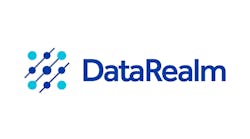Houston, Texas, October 3 -- ISA received notification on October 1 that an ISA technical report supporting Electronic Device Description (EDD) interoperability has received final approval from the American National Standards Institute (ANSI). ANSI/ISA-TR61804-4 (104.00.02)-2007, Function Blocks (FB) for Process Control - Part 4: Electronic Device Description (EDD) Interoperability Guideline, is the official United States adoption of the International Electrotechnical Commission (IEC) technical report of the same title.
The ANSI approval was announced by the ISA104 standards development committee at the Reliant Center in Houston, site of the major annual conference and exhibit for automation professionals, ISA EXPO. The approval follows and supports ISA's publication in June 2007 of ANSI/ISA-61804-3 (104.00.01)-2007, Function Blocks (FB) for Process Control - Part 3: Electronic Device Description Language (EDDL), as an American National Standard. That standard, also an IEC adoption, establishes how information-intelligent devices including control instrumentation and electrical gear integrate into control and device management systems.
The Electronic Device Description Language (EDDL) is used to create a file describing intelligent devices to integrate them with control systems and handheld communicators for use in the field. An EDD is a text file, and its use supports information retrieval, diagnostics, performance analysis, operational statistics, parameter handling, operation, range setting, calibration trim, simulation, override and monitoring of automation system components.
EDDL provides interoperability across software and handheld communicators, devices and bus protocols, allowing end users to integrate all intelligent devices into the same single software. The newly approved technical report provides guidance that ensures even greater consistency in operation of different devices. For example, the guideline includes a standard root menu for all devices. In the guideline, menu conventions and styles are defined for using the graphical features, such as waveform graph, trend chart, gauges, tabbed cards, windows, illustrating images, data tables and managing persistent storage of test data, that meet the requirements of even the most sophisticated and complex devices.
"This makes intelligent device management even easier, delivering the true promise of fieldbus and wireless," said ISA104 standards committee chair, Terry Blevins. "For example, persistent data storage allows baseline test results to be stored and recalled for comparison to results in the future to detect degradation."
The technical report for device developers includes examples that demonstrate the use of EDDL. In particular, it shows how user requirements are fulfilled. In this way, it supplements the EDDL specification with examples of how graphics are defined to make devices easier when doing setup and diagnostics, giving users excellent access to diagnostics for maintenance purposes during the operations phase of the plant life cycle.
"The great benefit of the technical report is that it provides examples and guidance on how to write an EDD using the EDDL," said ISA104 committee vice-chair Ludwig Winkel. "Similar to other computer languages, EDDL can be used in many ways to solve the same problem. Some of those ways are easy and direct while other approaches may not be as efficient to implement. To promote interoperability across applications, it is highly recommended that all EDD applications follow this guideline."
For information about EDDL, please visit www.eddl.org. For information about ISA104 or other ISA standards committees, visit www.isa.org/standards.



